Welcome to our blog on Merino sheep farming in Kenya! If you’re passionate about agriculture and interested in exploring the lucrative world of livestock breeding and marketing, you’ve come to the right place. This informative guide you through raising Merino sheep from scratch, sharing valuable insights on breeding techniques, nutrition, health management, and more. Whether you’re a seasoned farmer or a novice looking to embark on this exciting journey, we provide advice and practical tips to help you succeed in the thriving Merino sheep industry.
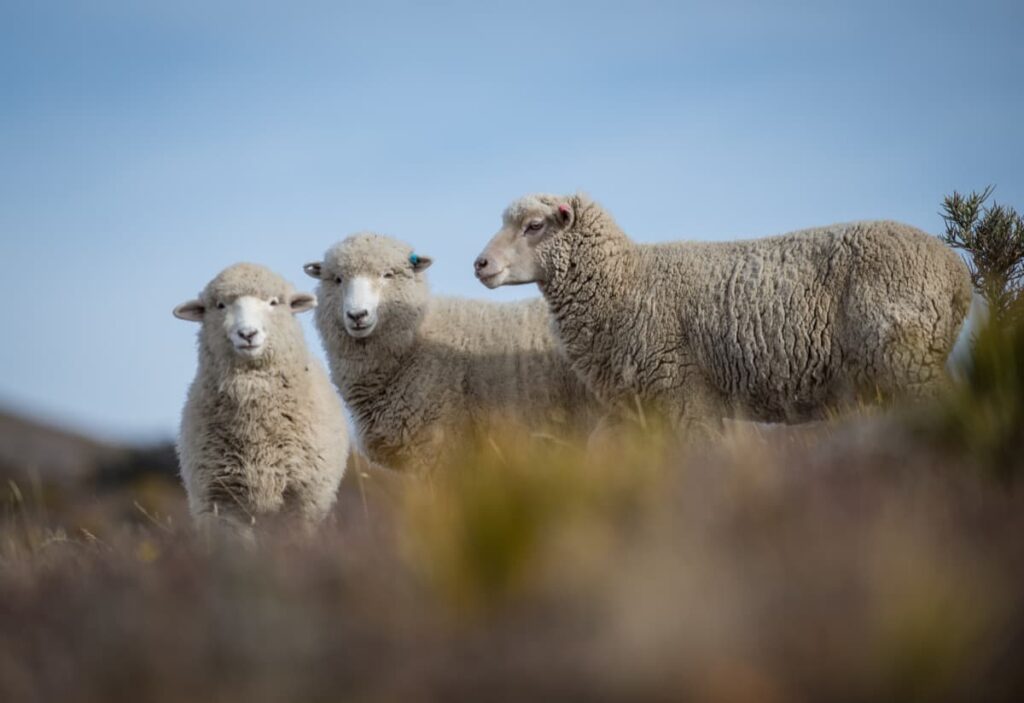
What is Merino Sheep Farming?
Merino sheep farming revolves around a breed or group of breeds known for their exceptionally soft and fine wool. Originating in Spain during the Middle Ages, the Merino breed was strictly controlled by the Spanish, prohibiting its export under the threat of severe punishment. In the 18th century, flocks were introduced to various European countries, developing different strains, such as the Rambouillet in France.
Over time, Merinos expanded its reach to regions like South Africa, Australia, and New Zealand. This expansion gave rise to various recognized breeds like the American Merino and Delaine Merino in the Americas, Australian Merino, Booroola Merino, and Peppin Merino in Oceania, and the Gentile di Puglia, Merinolandschaf, and Rambouillet in Europe.
Notably, the Australian Poll Merino is a variant of the Merino breed characterized by being hornless. While rams of other Merino breeds possess long, spiral horns close to the head, ewes of the breed are typically hornless. The diverse variants of Merino sheep offer farmers different options to suit their specific needs and preferences.
Quick Facts on Merino Sheep Farming
- Merino sheep are primarily raised for their wool, known for being the softest and finest in the world.
- The breed originated in Spain but was refined in New Zealand and Australia.
- Adult Merino rams weigh around 90 kg (200 lb), while ewes weigh about 70 kg (155 lb).
- The Peppin Merino variety produces approximately 18 kg of wool with a fiber diameter of 24 microns.
- Merinos are highly adaptable and excellent foragers.
- They are not bred for meat production and are smaller than meat breeds.
- Lack of shearing can lead to mobility issues, blindness, and heat stress in Merino sheep.
- Merino wool is widely used in the textile industry.
- Poll Merinos are hornless, while horned Merino rams have long, spiral horns.
- Merinos are known for their adaptability to various climates.
- Merinos bred for meat production do not yield good-quality wool.
- Regular shearing is essential for the survival of Merino sheep, and it should be done at least once a year.
In case you missed it: Dairy Sheep Farming: Raising from Scratch for Breeding to Marketing
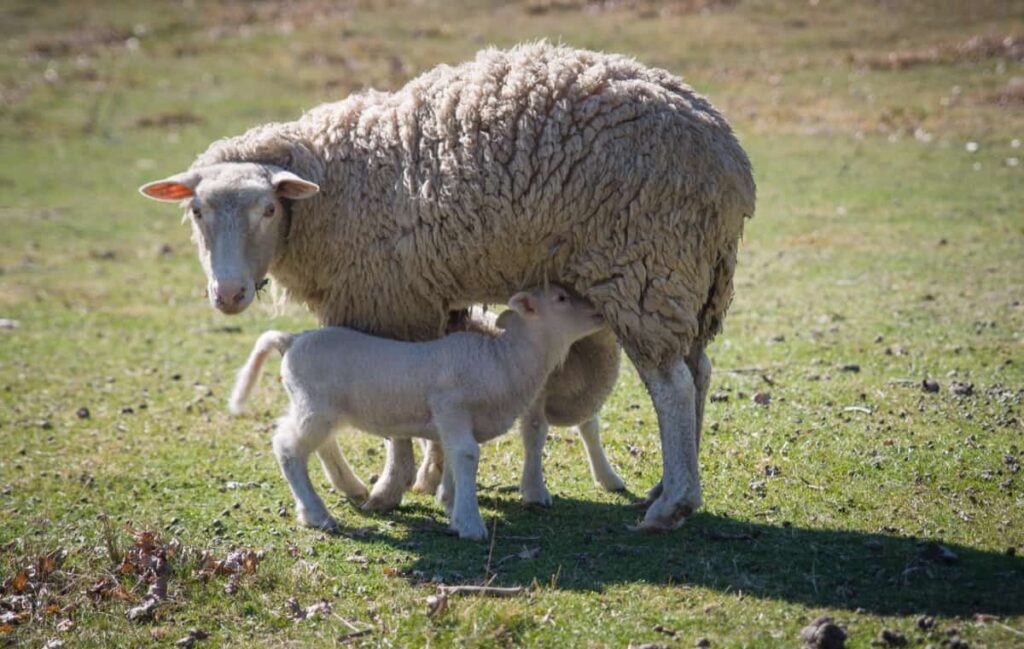
Merino Sheep Farming History and Origin
The term “merino” emerged in Spain in the 15th century, with disputed origins linked to a Castilian official inspector or the Imazighen tribe. The Merino breed’s origin involves North African importation theories, Extremadura development, and selective crossbreeding. Spain monopolized fine wool exports in the 15th and 16th centuries, while the Mesta oversaw transhumant practices. Merino sheep were exported to Sweden, France, Hungary, Prussia, and South Africa.
The Rambouillet stud in France influenced Australian Merino development, and John MacArthur introduced Merinos to Australia from South Africa. Merino breeding thrived in Saxony, Germany. Merinos reached North America through Portugal, gaining popularity during the “Merino Craze.” The Napoleonic wars caused Spanish Merino dispersion and spurred the industry’s shift to Germany, the United States, and Australia. The history and origin of Merino sheep farming reflect a journey of crossbreeding, selective breeding, and global expansion.
Merino Sheep Farming in Kenya: A Beginner’s Guide
Merino sheep farming in Kenya holds immense potential for wool production and economic development. This beginner’s guide offers crucial information to help newcomers embark on this lucrative journey. Kenya’s diverse climates, varying in temperature, rainfall, and altitude, create favorable conditions for Merino sheep farming. Regions with cool to moderate temperatures and ample pasture are well-suited for rearing Merino sheep.
When selecting breeding stock, choosing reputable breeders or suppliers known for high-quality Merino breeds that exhibit desirable wool quality, adaptability, and disease resistance is vital. Providing well-ventilated housing and maintaining nutritious pastures are essential for the health and well-being of the flock. A balanced diet comprising quality forage, grains, and mineral supplements is crucial for meeting the nutritional needs of Merino sheep.
Proper health management, including vaccination, deworming, regular monitoring, and veterinary care, helps prevent common diseases. Additionally, understanding the shearing process, ensuring appropriate wool storage, and implementing effective breeding programs contribute to the overall success and profitability of Merino sheep farming. Active networking, knowledge sharing, and staying informed about industry advancements are also important for long-term success in this field.
Merino Sheep Farming Techniques in Kenya
Merino sheep farming in Kenya has gained popularity as a profitable venture due to the high-quality wool these sheep produce. Merino sheep farming in Kenya offers potential for economic growth and the production of high-quality wool, making it an attractive venture for farmers.
- Housing: Provide well-ventilated shelters that are spacious and clean, with comfortable bedding to ensure the sheep’s well-being and prevent infections.
- Feeding: Offer a balanced diet of good quality hay, grains, and clean water. Supplement their diet with minerals to meet their nutritional needs.
- Pest and Disease Control: Regularly monitor the sheep for pests like ticks, lice, and fleas, and promptly treat them with appropriate pesticides. Practice good hygiene in housing to reduce the risk of disease outbreaks.
- Gestation and Maturity: The gestation period for Merino sheep is around 147 days, and they generally reach maturity between six and twelve months, depending on the breed and environmental factors.
- Advantages and Drawbacks: Merino sheep offer advantages such as high-quality wool, high fertility rates, and a relatively short gestation period. However, they require intensive management and can be susceptible to pests and diseases.
- Market: There is a growing demand for Merino sheep for wool and meat in Kenya. The textile industry is a significant market for Merino wool, while the meat market continues to expand.
- Suppliers and Buyers: Farmers can purchase quality Merino sheep from reputable breeders or other farmers. Buyers include the textile industry and meat processors.
- Benefits of Merino Sheep: Merino wool makes various products such as clothing, blankets, socks, scarves, yarn, mattress toppers, and felted items. These products are known for their softness, durability, and warmth.
In case you missed it: Dorper Sheep Farming in Kenya: Raising From Scratch for Breeding to Marketing

Starting a Profitable Merino Sheep Farm in Kenya
Choosing the Right Location: The right location is crucial for a Merino sheep farm. Look for areas with suitable climates and ample pasture for grazing. Regions with cool to moderate temperatures and good rainfall are ideal.
Acquiring Quality Breeds: Source Merino sheep breeds from reputable breeders or established farms. Choose breeds known for their superior wool quality, adaptability to local conditions, and disease resistance. Conduct thorough research and consider seeking advice from experienced farmers or agricultural experts.
Establishing Adequate Housing: Provide well-ventilated and spacious housing for the sheep. Design the shelters to protect them from extreme weather conditions. Ensure proper flooring and bedding to maintain hygiene and prevent infections.
Implementing Nutritious Feeding Practices: Develop a balanced feeding program for the sheep. Provide high-quality forage, grains, and mineral supplements to meet their nutritional needs. Consult with veterinarians or animal nutritionists to formulate an appropriate feeding plan.
Healthcare and Disease Prevention: Establish a regular healthcare routine for the sheep, including vaccinations and deworming. Monitor the flock for signs of illness and seek professional veterinary assistance when needed. Implement effective pest control measures to prevent infestations.
Shearing and Wool Management: Schedule regular shearing to maintain the health and quality of the wool. Properly store and market the wool to maximize profitability. Consider value-added options such as wool processing or product development to enhance the market value.
Breeding and Reproduction: Develop a strategic breeding program to improve the genetics and productivity of the flock. Understand the reproductive cycle and optimize breeding methods for successful reproduction. Keep detailed records to track breeding performance.
Marketing and Sales: Identify local and international markets for Merino wool and related products. Establish connections with textile manufacturers, wool processors, and potential buyers. Develop modern marketing strategy to promote your products and ensure profitability.
Advantages of Merino Sheep Farming in Kenya
High-Quality Wool: Merino sheep produce wool of exceptional quality, known for its softness, durability, and breathability. This wool is highly sought after in the textile industry.
Versatile Use: The wool from Merino sheep creates a wide range of products. It is ideal for making clothing, including outdoor gear for hiking, skiing, and snowboarding activities. Additionally, it is used to make blankets, throws, scarves, shawls, socks, and yarn for knitting and crocheting projects.
In case you missed it: The Ultimate Guide to Sheep Vaccination Schedule: Deworming Chart/Calendar
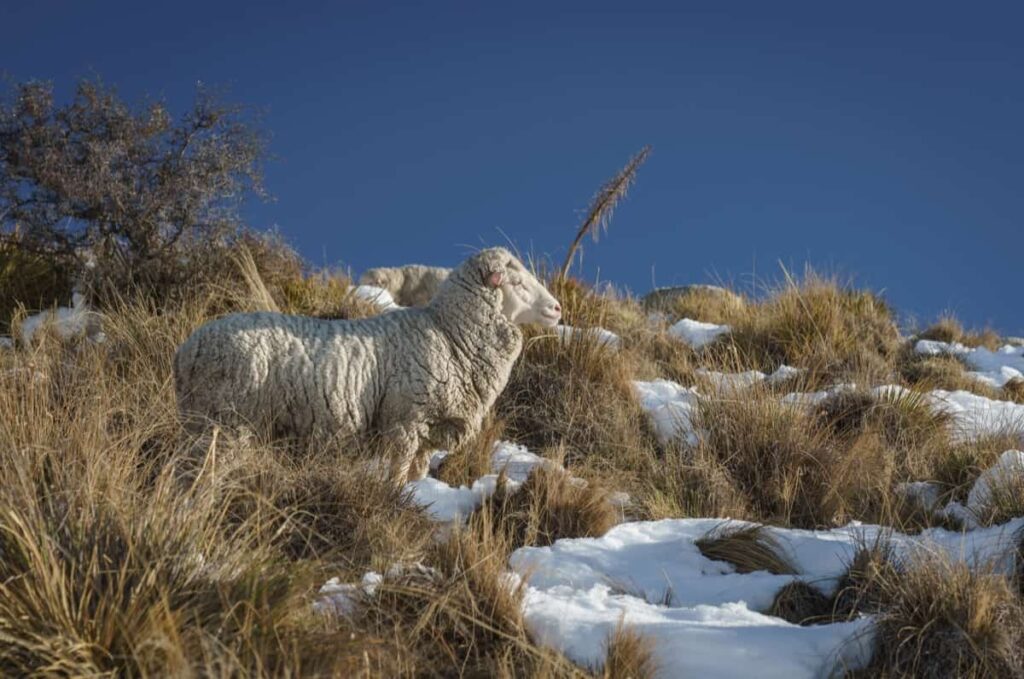
Moisture-Wicking Properties: Merino wool socks are popular for outdoor activities and everyday wear due to their moisture-wicking properties. They help keep feet dry and comfortable by absorbing and evaporating moisture.
Warmth and Comfort: Merino wool blankets, throws, and mattress toppers provide excellent insulation and warmth. They are perfect for colder climates, ensuring a cozy and comfortable environment.
Durability and Longevity: Merino wool is known for its durability, allowing its products to withstand regular use and maintain their quality over time. This ensures longevity and value for consumers.
Unique and Textured Products: Felted products made from Merino wool, such as slippers, hats, and bags, offer durability and a unique texture. These products are popular for their distinct look and feel.
Merino Sheep Nutrition and Feeding Practices in Kenya
Merino sheep in Kenya require a balanced diet to meet major nutritional needs for optimal health and productivity. Their diet should consist of high-quality forage, such as grasses and legumes, supplemented with grains and mineral supplements. The nutritional requirements of Merino sheep vary depending on factors like age, weight, and physiological status.
Providing adequate amounts of protein, carbohydrates, vitamins, and minerals in their feed is essential. Regularly monitoring body condition and weight is important to adjust feeding practices accordingly.
Common Diseases in Merino Sheep Farming in Kenya
Foot rot, pneumonia, enterotoxemia, and internal and external parasites are common diseases in Merino sheep. Proper hoof trimming, bathing, and vaccination can prevent foot rot, pneumonia, and enterotoxemia. Vaccination, good ventilation, and stress reduction can prevent pneumonia. Vaccination and proper feeding management can prevent enterotoxemia.
In case you missed it: Sheep Farm Operations Management: Month-Wise Maintenance For Better Profits
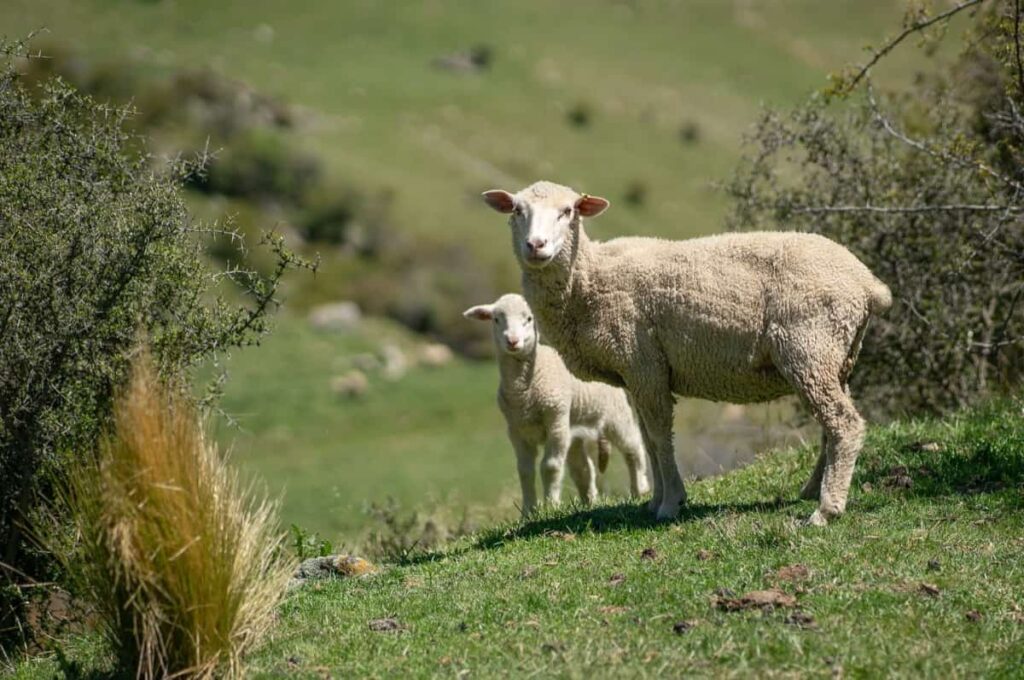
Internal parasites like roundworms and tapeworms can cause health issues, while external parasites like ticks, lice, and fleas can cause discomfort, skin irritation, and reduced wool quality. Proactive disease prevention measures, including vaccination, nutrition, hygiene, and monitoring, are needed to maintain Merino sheep’s health and productivity in Kenya. Regular veterinary consultations and diagnostic testing can aid in early detection and effective disease management.
Breeding Strategies for Merino Sheep in Kenya
Considering genetic background and performance records, select high-quality breeding stock with desirable traits like wool quality, disease resistance, and high fertility rates. Implement controlled breeding programs like AI and selective mating to enhance the flock’s genetics and productivity. Optimize reproductive management by understanding the reproductive cycle, implementing proper nutrition, timely breeding, and regular monitoring.
Crossbreeding with other suitable breeds introduces genetic diversity and improves traits like meat production or adaptability to local conditions. Maintain detailed records of the breeding program and regularly evaluate the genetic progress of the flock to make informed decisions for future breeding strategies. Consult with breeders, veterinarians, and agricultural experts for guidance and support.
Market Opportunities for Merino Wool in Kenya
Merino sheep in Kenya thrive in semi-arid to sub-humid climates at medium to high altitudes. They have a distinct white coat and fine wool. The breed is known for its heavy body weight, with mature males weighing around 100 kg and females around 60 kg. Merino sheep are well-adapted to high-rainfall grassland regions, and their smooth bodies make them less susceptible to fly strikes than sheep with skin folds.
The primary purpose of keeping Merino sheep is for their wool, with an average fleece weight of 5.5 kg per year. There are market opportunities in Kenya for Merino wool, which can be used in various textile and garment industries.
In case you missed it: How to Make Silage for Livestock: Business Plan, Preparation Process for Goats, Sheep, Pigs, and Cows
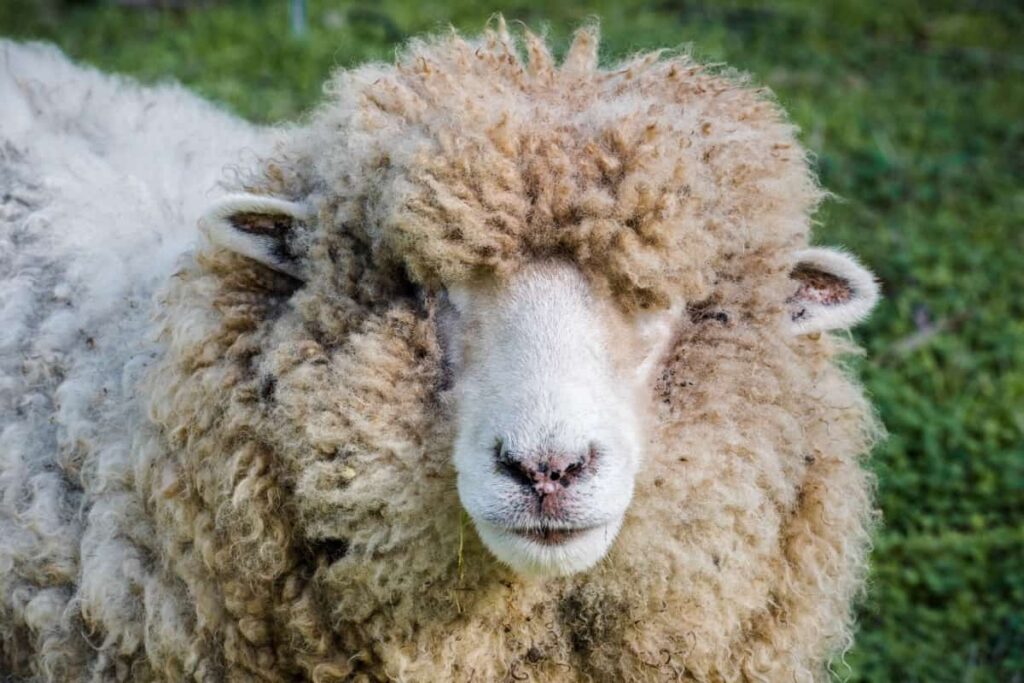
Conclusion
Merino sheep farming in Kenya offers a profitable venture, from selecting quality breeds and implementing sustainable breeding practices to proper nutrition, health management, and marketing strategies. Farmers can succeed in breeding and marketing Merino sheep with dedication and proper management.
- Aquaponic Farming at Home: A Step-By-Step Guide
- Profitable Village Farming Business Ideas in 2024
- High-Yield Aquaculture: Fast-Growing Fish for Farming
- Effective Fish Pond Construction Techniques for Beginners
- Irrigation and Water Management in Pineapple Farming
- Blossom to Harvest: Mastering Flowering and Pollination in Papaya Farming
- Pig Fattening Essentials: From Selection to Sale for Beginners
- Raising Wagyu Cattle: A Complete Guide for Premium Beef Production
- Soil Types and Their Water Holding Capacity
- Optimizing Irrigation Schedules for Coconut Groves for Enhanced Yield
- Espresso Your Garden: Coffee Grounds for Healthier Acid-Loving Plants
- The Best Soil Mix for Snake Plants: How to Mix Your Own Snake Plant Soil
- Green Thumb Success: Expert Tips for Cultivating Greenhouse Beans All Year Round
- Bloom All Year Round: The Ultimate Guide to Indoor Hyacinth Care
- Eco-Friendly Gardening: How to Make Liquid Fertilizer from Kitchen Waste
- Ultimate Guide to Grow Anise in Pots: Explore Seed Propagation to Harvesting
- Guide to Raising Chester White Pigs: Discover Breed Facts to Growth Management
- Mastering the Elegance: The Ultimate Guide to Weeping Cherry Tree Care, Planting, and Maintenance
- Ultimate Guide to Planting Garlic in Grow Bags: Growing Strategies for Beginners
- How to Fix Spider Plant Leaf-Related Problems: Natural and Organic Remedies
- 10 Reasons Why Your Tulsi Plant is Shedding Leaves: Home Remedies and Solutions
- Optimizing Growth and Yield: The Advantages of Palm Bunch Ash Fertilizer
- Utilizing Neem Oil Extract as a Natural Pesticide for Hydrangea
- From Soil to Harvest: Various Ways in Which Farmers Can Use AI Tools
- Steps to Encourage and Induce Citrus Flowers: A Comprehensive Guide
- How to Fix Snake Plant Leaf-Related Issues: Natural and Organic Remedies
- Transform Your Garden into a Fragrant Oasis with Raat Ki Rani (Night Blooming Jasmine)
- Discover the Ideal Chicken Breeds for Philippine Farms
- How to Create a Poultry Egg Farm Business Plan for Profits
- Grow Lemon Cucumbers Like a Pro: Insider Techniques for Bountiful Yields
- Ultimate Guide to Caring for Your Pink Princess Philodendron: Tips for Thriving Variegation
- Areca Nut Profit Per Acre: Calculating Yield and Cost of Cultivation
- How Kaveri Chicken is Becoming a More Profitable Breed in Indian Backyards
- Transform Your Barn: 9 Steps to Convert a Horse Stall into a Chicken Coop
- Exploring Suffolk Sheep Disadvantages with Limitations and Challenges
- Guide to Solving Potted Lemon Tree Problems: How to Revive Lemon Tree in Containers
